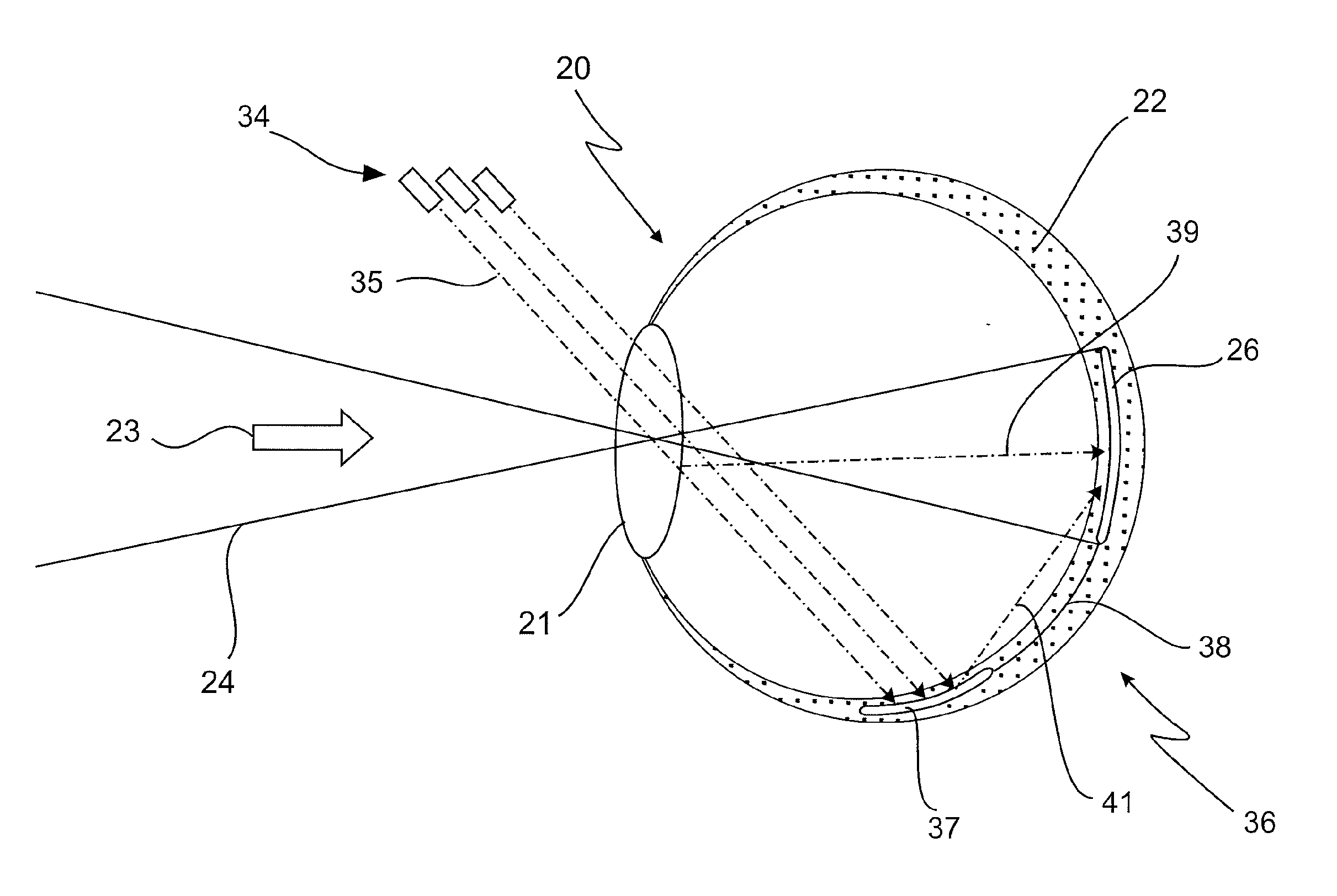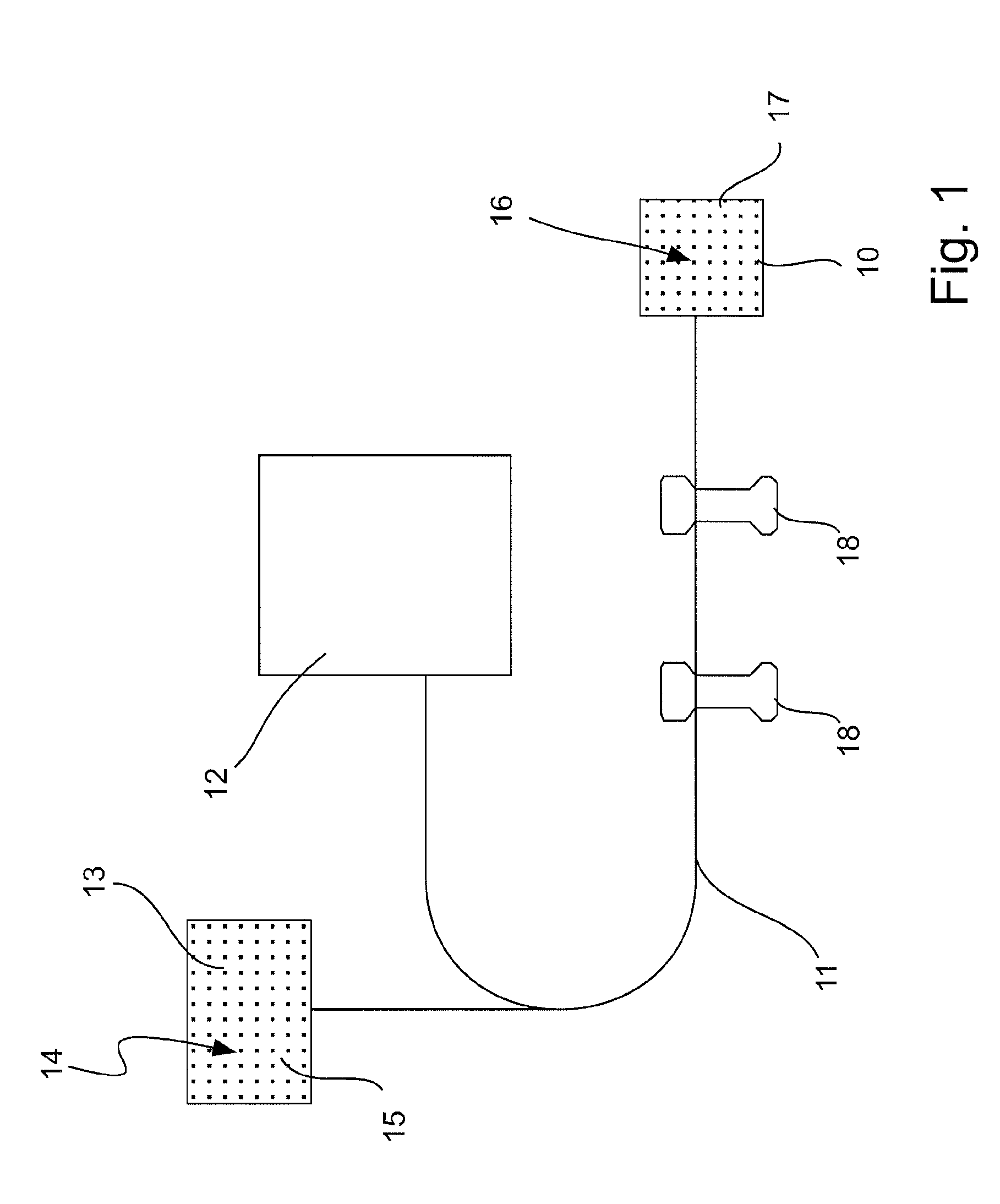Active retinal implant
- Summary
- Abstract
- Description
- Claims
- Application Information
AI Technical Summary
Benefits of technology
Problems solved by technology
Method used
Image
Examples
Embodiment Construction
[0129]FIG. 1 schematically illustrates a first embodiment of an active retinal implant 10, in which the dimensions have not been reproduced to scale.
[0130]A wire 11 is used to connect the retinal implant 10 to a supply unit 12 and an image receiver 13, with an array 14 of image cells 15 being arranged thereon and being designed, for example, as photodiodes. An array 16 of radiation-emitting stimulation elements 17 is arranged on the retinal implant 10 in order to output optical stimulation signals. By way of example, the stimulation elements 17 are designed as light-emitting diodes (LEDs).
[0131]The supply unit 12 supplies the retinal implant 10 with electrical energy and possibly with control signals, which can be used to influence or set different functions of the retinal implant.
[0132]The image receiver 13 uses the image cells 14 thereof for converting incident ambient light into spatially resolved electrical signals that are guided to the retinal implant 10 and are, at said locat...
PUM
 Login to View More
Login to View More Abstract
Description
Claims
Application Information
 Login to View More
Login to View More - R&D
- Intellectual Property
- Life Sciences
- Materials
- Tech Scout
- Unparalleled Data Quality
- Higher Quality Content
- 60% Fewer Hallucinations
Browse by: Latest US Patents, China's latest patents, Technical Efficacy Thesaurus, Application Domain, Technology Topic, Popular Technical Reports.
© 2025 PatSnap. All rights reserved.Legal|Privacy policy|Modern Slavery Act Transparency Statement|Sitemap|About US| Contact US: help@patsnap.com



